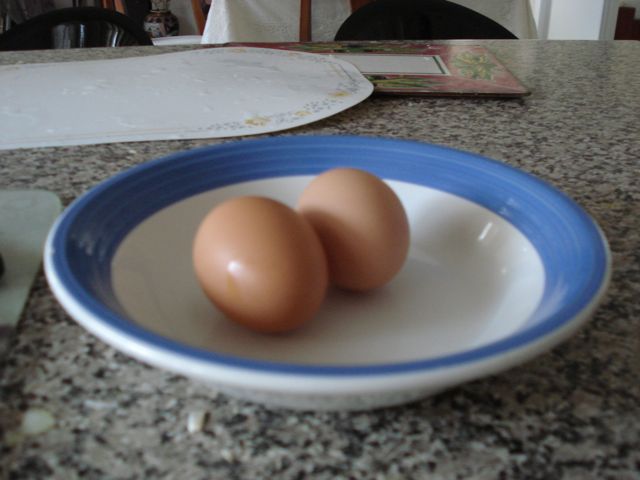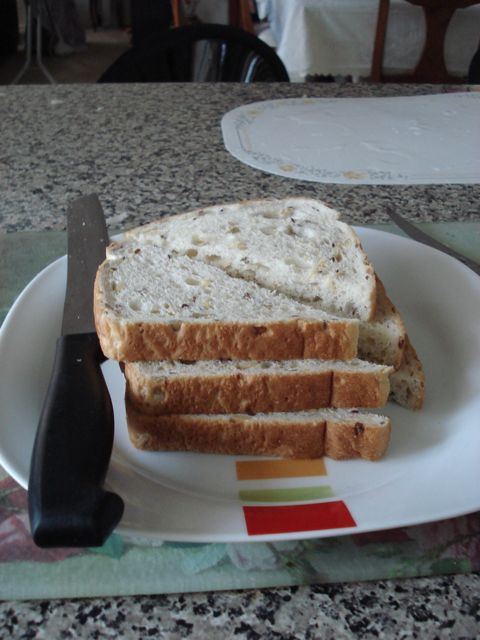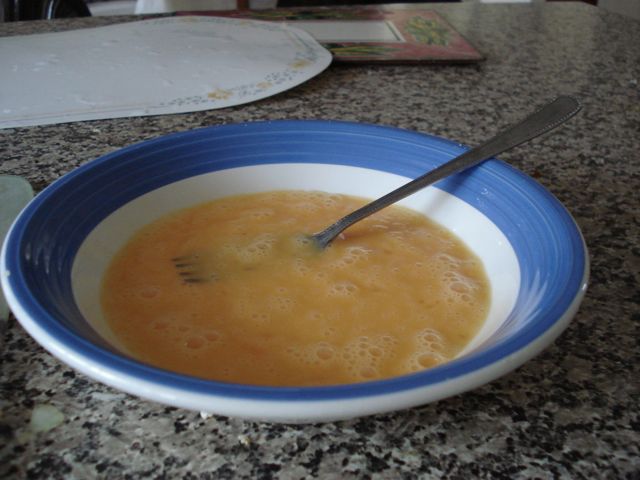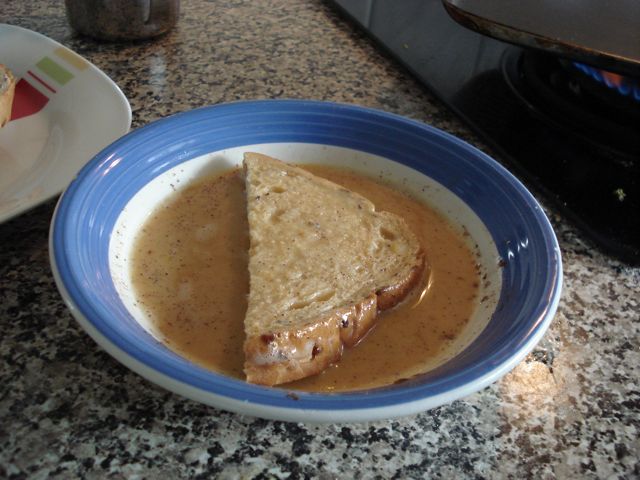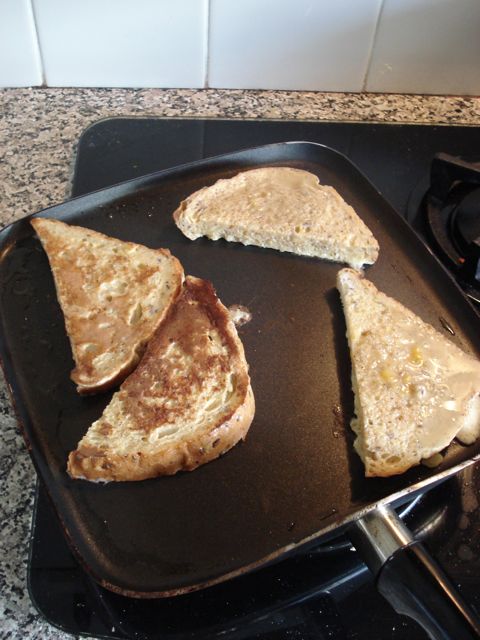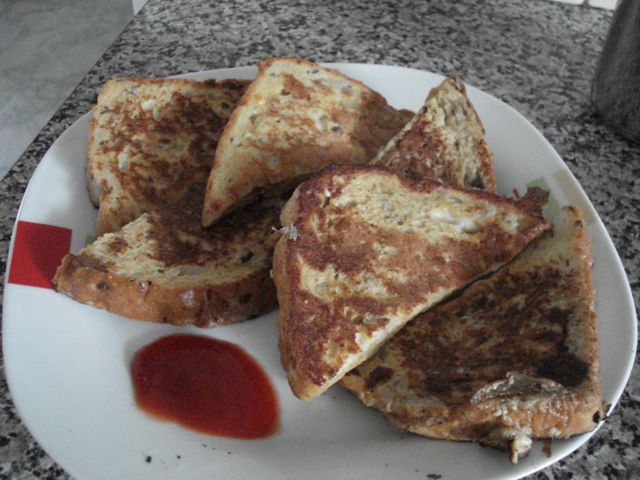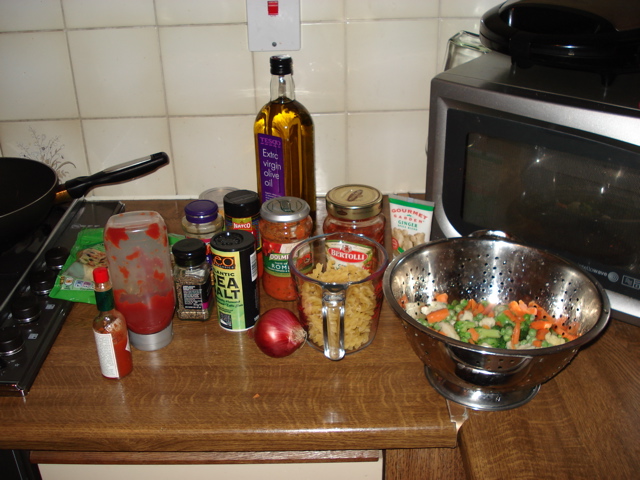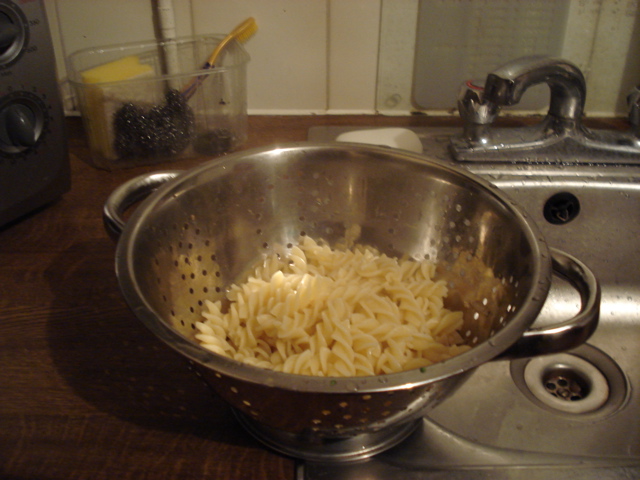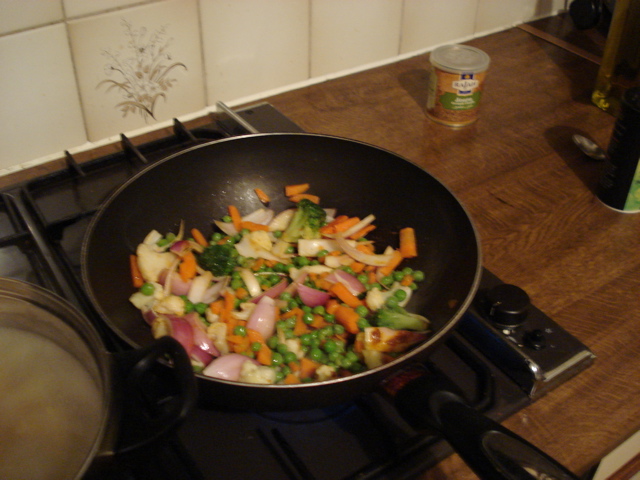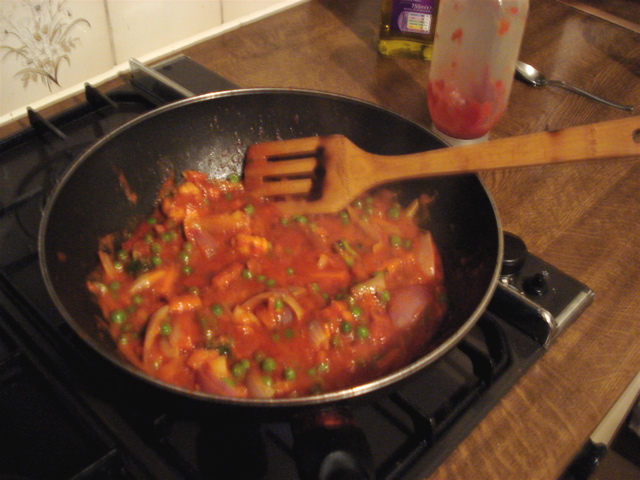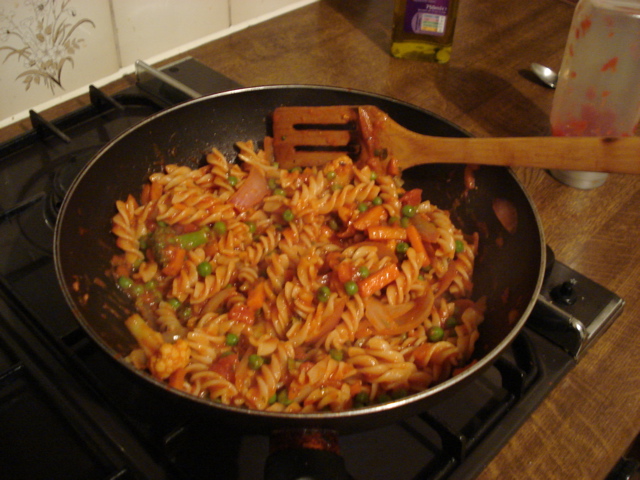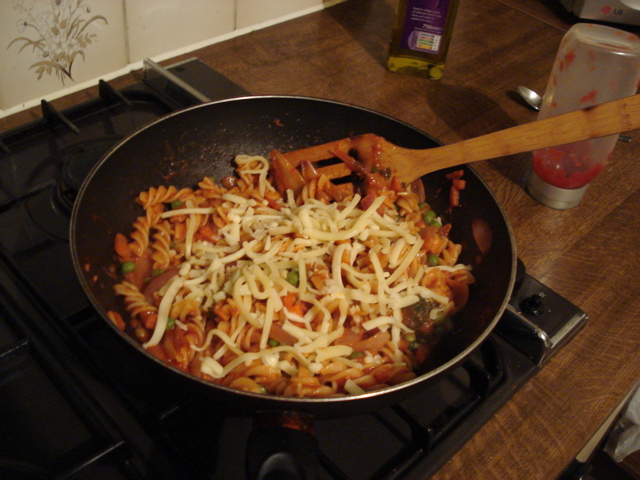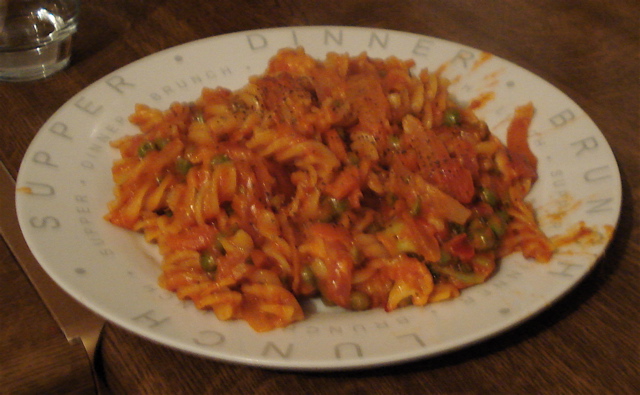Lobia or black-eyed beans follow the classic recipe for lentils, so this is another nice place to start to learn the variety of Indian food. I like to think of most Indian food as falling into two broad categories – “wet” and “dry”.
Last time, I demonstrated dry, so this time it’s the wet, and this can be easily used (with slight tweaks perhaps) for nearly any daal (lentils) like (and I use hindi names here out of ignorance) mung sabut (mung bean lentils?), channa (chickpeas) or channa daal (split chickpeas), and a whole variety I know not the names of. Not to mention my favourite, rajma (red kidney beans), though the preparation for that is a little different.
What you will need is a pressure cooker. They are the key for making “wet” Indian dishes in my house – the pressure cooker is a great way to save time. The other way would be to use a saucepan/pot and boil for a long time, or a slow-cooker which takes almost a whole day. Unfortunately, this is also pretty uncommon, as far as I’m aware, outside of Indian homes…
What you’ll need
- Black-eyed beans: one cup by volume (8 fl. oz.). It’s a little approximate, like all Indian cooking (plus I have no weighing machine), but that’s usually enough to serve 2 – 3 as a main, 3 to 4 as a side.
- 1 large onion: I prefer red onions, but you can use whichever variety is at hand. Use a food processor to chop them finely.
- Peeled tomatoes: half a tin does the trick (minimum), but if you’d prefer to use fresh tomatoes, one large or two small (e.g. roma) does the trick. Purée them; the result should be basically liquid.
- Garlic: two cloves, finely chopped, or a teaspoon of pre-processed.
- Spices – Ginger, salt, garam masala, lal mirch (red chilli powder), coriander powder: all in roughly the same proportions as for the aloo gobi. It’d be fairly easy to prepare a mix of all the powders beforehand, as they’re all going to get mixed in anyway, and could be useful in future.
- Cooking oil: 1 – 2 tablespoons. Any will do; I favour olive.
- Water: roughly 4 cups (2 litres) – 4 times as much as the Lobia by volume.
- Half an hour to 40 min for cooking.
The Method to this Madness
- Wash the lobia and allow them to soak in water for about 5 min – this is just to soften them up initially, and if you prefer firmer then don’t leave them to soak.
- Heat oil in pressure cooker with lid open, or alternatively use separate saucepan – using the same saves time, effort & mess, though.
- Add chopped onions, spices, garlic & ginger. Sauté until onions start to change colour – on high heat this should be fairly quickly. Reduce the heat at this point.
- Add puréed tomatoes, and mix in well to ensure a relatively even mix. Allow to simmer until the tomato starts to separate – oil should start becoming visible on top of the mix. Mix this further for a little bit to ensure evenness.
- Add black-eyed beans & water, ensuring that the water at least covers all the beans. Mix well.
- Increase the heat and close the lid of the pressure cooker.
- When you start to see steam emerge from the vent, put on the weight/pressure-inducing device at this point. This is to allow all the extra air to escape.
- If you’re doing this for the first time, or are fearful of putting the weight on after the cooking is started, it’s also ok to put the weight on right from the start. The results are a little more variable in my experience, but this is also accepted practice.
- At the first whistle/release of pressure, reduce the heat to low, and note the time. You want 15 minutes of cooking at pressure for black-eyed peas.
- You’ll want more if you’re cooking something harder, like red kidney beans or chickpeas. If you’re doing basic lentils, you’ll want far less – shelled lentils can be as low as a couple of minutes.
- Wait 15 min, and then turn off the heat
- Leave for another 10 – 15 min, then open it up, releasing the pressure if necessary
- You should have a nice broth, more liquid than solid, with softened black-eyed beans.
- If it appears a little thick, add hot water now. If upon tasting the spices are a little low, add spices & boil for a couple of minutes to ensure even mix. If the beans are not soft, boil for another 5 minutes, under pressure, to allow them to soften a bit.
- Serve hot with basmati rice
Timings will need tweaking for other types of lentils, but the basic template is the same – quite flexible to your needs. Cooking without a pressure cooker would probably take well over an hour, though as I’ve not done this yet it’s simply a guess. Et voila, a recipe for the “wet” Indian dishes :)
